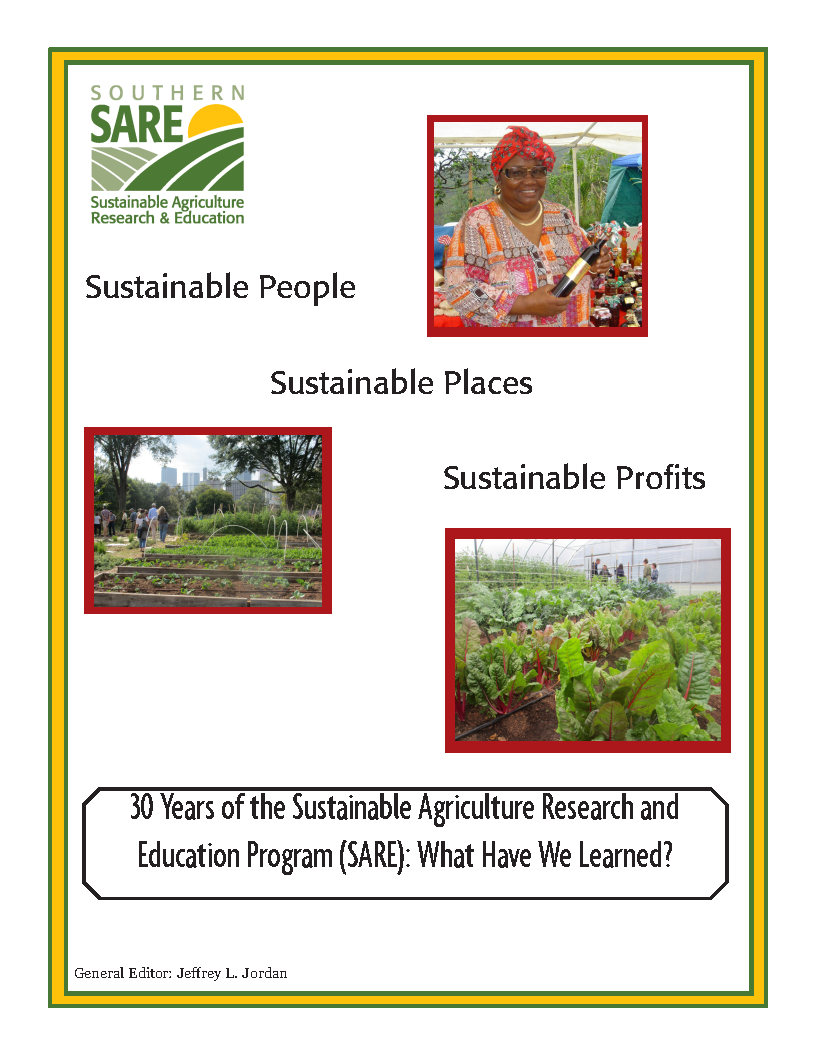-
Jordan, Jeffrey L.
Sustainable People, Sustainable Places, sustainable Profits: 30 Years of the Sustainable Agriculture Research and Education Program (SARE): What Have We Learned?
Summary
Since 1988, the Sustainable Agriculture Research and Education Program (SARE), a Congressionally authorized program housed at the National Institute for Food and Agriculture (NIFA/USDA), has distributed nearly $300 million in grant funds to 7,275 projects. These projects have ranged from large Research and Education (R&E) grants of over $300,000 primarily to university researchers to $10,000 grants directly to farmers and ranchers across the nation to do research on their own farms. Over the past 30 years there has been no systematic attempt to develop a comprehensive assessment what has been learned from this massive infusion of federal grant money to the sustainable agriculture community.
Situation
In 2019 the SARE program developed a comprehensive data base which contains reports and supporting materials for the 7,275 projects that have been funded since 1988.
Response
In 2020 an iterative, multi-phased project was begun to develop a comprehensive assessment of what has been learned from the 1,607 SARE Research and Education grants over 30 years. Phase one will be a review of the project database reports and tagging to determine the scope/methods of assessment and to develop project and output specifications.
Impact
The first year of the project has examined the history of the SARE program and the evolution of the field of sustainable agriculture and lessons learned from the SARE program model. The project has also organized and categorized the 1,607 projects into ten sets of agricultural practices and nine groups of commodities.
State Issue
Sustainability, Conservation, & the Environment
Details
- Year: 2020
- Geographic Scope: National
- County: Spalding
- Location: Georgia Station, Griffin
-
Program Areas:
- Agriculture & Natural Resources
Author
Research Impact

